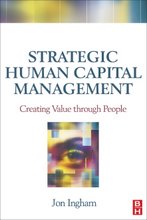
I’ve posted several times recently to suggest that what seem like decent engagement scores being reported by some organisations and a few vendors may hide a number of potentially very significant, and growing, employment problems.
New based research from Plateau Systems seems to confirm this thinking:-
So firstly, yes, this survey also suggests job satisfaction is fairly high. In fact, 62% of the two thousand adults in Great Britain who participated in this YouGov survey suggested that they are very, or somewhat, satisfied in their current job.
There are some interesting variations within this – so whilst at the lowest end of the spectrum, only 49% of London based workers are very / somewhat satisfied, a full 73% of those not-always-so-cheerful Scots say they are similarly satisfied.
And while 62% may be high, it’s a tad bit lower than the 69% of US employees who said they were very or somewhat satisfied in s similar survey completed recently (see Plateau’s summary of this research, or John Hollon’s write-up at TLNT.com).
I’m Outta Here!
Based upon these findings, and what we know more broadly about the economy, it’s no great surprise that just 15% of people said they were actively job hunting (17% in London – and the North-West, and just 10% in Scotland – and only 8% in Yorkshire and the Humber).
But the survey identifies 72% of respondents, all currently employed, as I’m Outta Here’s: passive job seekers who would consider leaving their current job if approached with a new job opportunity.
And while 46% of people are seeking or would consider a new job to increase their salary, 27% are looking for career advancement and the same percentage say they just need a change - in fact 21% of people say they want to change their careers or professions as well as their employers.
(YouGov doesn’t seem to have asked people whether they’ve just felt used and abused, particularly over the last couple of years.)
You Comin’ Over?
It strikes me to be a pretty good time to be recruiting, particularly for people in London and the South. It doesn’t look like you’d even need to offer people huge increments over their current compensation. The main need seems to be about simply being flexible enough to give people a shot at something new.
Of course you could always try doing this with your existing workforce too. You may even create a few more I’m Stayin’ Put’s as well!
Plateau
This is the first of a series of posts at Strategic HCM sponsored by Plateau.
Plateau provides SaaS-based Talent Management solutions for developing, managing, rewarding and optimising organisational talent to increase workforce productivity and maximise operating performance.
Plateau software has been deployed by many of the world's most successful enterprises. Organisations such as GE, Royal Bank of Canada, Singapore Airlines and Thomson Reuters use Plateau to increase the productivity of their employees and partners.
Plateau delivers:
- Scalable, flexible and secure multi-tenant architecture
- 99.5% uptime
- 24 x 7 x 654 support
- Experienced experts to manage your system from implementation to ongoing support.
Contact Plateau here or call at +1 866 4PLATEAU (+1 866 475 2832) or in the UK at +44 203 1788 409.
You can also read updates from Plateau at their new blog: http://www.plateau.com/blog.
Technorati Tags:
Plateau,
YouGov,
survey,
UK,
passive,
job,
seeker,
finder,
employee,
satisfaction,
happy.























 I don’t normally post about client work but I’ve been in a workshop this week that has been particularly interesting and relevant to some of the stuff I’ve recently posted on here.
I don’t normally post about client work but I’ve been in a workshop this week that has been particularly interesting and relevant to some of the stuff I’ve recently posted on here.
 One thing I did agree with
One thing I did agree with  I’ll be presenting on HR and Social Media at the
I’ll be presenting on HR and Social Media at the 














